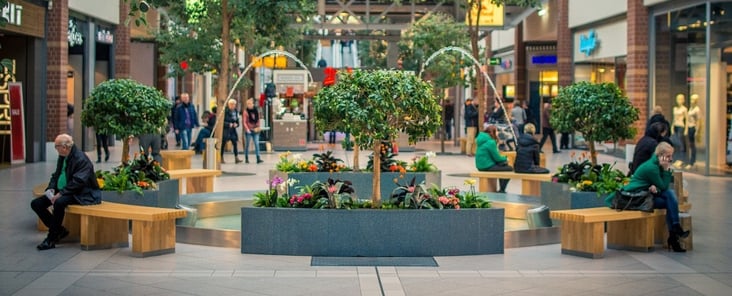This is a guest post from AEE affiliate member Navigant. To learn more about Navigant, click here. To learn more about membership in AEE, click here.

The Internet of Things (IoT) is transforming the way building technologies, business data, and analytics tools can integrate to deliver vital information. Now, IoT is going retail. Company executives and store managers can use IoT solutions to achieve important business goals, ranging from energy efficiency and sustainability to improvements in equipment performance for better customer experiences. These technologies can have a direct impact on the bottom line by keeping shoppers comfortable and giving them a new kind of shopping experience.
The technologies that support the facilities management industry have undergone an evolution. Information technology solutions—particularly building energy management systems (BEMS)—are giving operations teams new insight into equipment operation and executives new views into the financial impacts of energy use.
Low-cost devices such as smart thermometers gather and deliver data to give users better information. These devices are the backbone of an IoT platform and enable vendors to transition away from individual point solutions for energy and maintenance and toward platform offerings for building optimization. Using these devices, companies can utilize comprehensive intelligent building solutions in any of their facilities and look for portfolio-wide insights.
The way in which IoT is transforming facilities management parallels the evolution—and even disruption—of other technology markets. Smartphones, for example, have redefined how people access information and manage personal tasks, giving users data in real time, anytime. In a similar way, IoT-enabled intelligent building solutions are transforming the way commercial buildings are operated and even viewed as business assets. IoT not only delivers benefits through better information on equipment performance and building use, but also important and specific benefits for verticals. Whereas all facility owners can realize value through energy cost savings and improvement in repair and maintenance processes, there are specific use cases that drive adoption in specific business segments.
Energy management improvements have long been the primary business case for intelligent building technologies. More data about equipment performance can lead to changes in management and operations that result in reductions in consumption and alternative approaches to manage demand. The result is reduction in energy costs—a straightforward return on investment.
Operational efficiency is a second benefit of IoT and intelligent building solutions. The granular data delivered about specific equipment performance or occupancy and use trends can enhance and even create new strategies for maintenance and repair. Ongoing tracking capabilities can monitor progress and document how improvements in processes translate into economic benefits. The ability to correlate operations and financial performance can bring facility maintenance and energy management into the boardroom with new relevance.
The retail industry is poised to reap significant benefits from IoT. These four use cases demonstrate how retail business customers can realize economic and business improvements with IoT:
- Comfort: A comfortable customer will shop longer – a shopper who is too hot or too cold is a shopper who is moving on. This has long been recognized. The challenge is managing repair and maintenance to optimize customer comfort. BEMS and IoT deployments give facilities new tools to monitor comfort levels in real time, direct work orders effectively, and create dynamic scheduling and automation of lighting and HVAC.
- Product Placement: IoT data gives executives new insight into how customers move through their stores. These solutions can be used to establish tiered pricing for product placement. Real-time data and ongoing occupancy tracking gives store owners new leverage with their suppliers and the information they can use to create new revenue streams associated with premium product placement.
- Customer Service: Shorter lines bring repeat customers. IoT intelligent building solutions can monitor occupancy in real time and give managers the insight to staff sales associates at the busiest locations or create a responsive flow of sales staff to match customer needs.
- Personalized Wayfinding: IoT can be truly innovative in an opt-in scenario for specific savings. Customers’ smartphones can become IoT nodes to drive personalized wayfinding. Upon entering a store, for example, IoT devices in product aisles can cue customers to sales items, coupons, or rebates, or act as personalized maps to help guide them.
Are you interested in hearing more about the role of IoT in retail? Join me, Rick Lisa, Director of IOTG America’s Sales at Intel; Greg Fasullo, CEO at Entouch Controls; and Craig Robinson, Partner at Traverse Ventures Partners for a roundtable conversation exploring how the IoT is redefining the retail experience on February 14 at 2 p.m. ET. Click the link below to register.